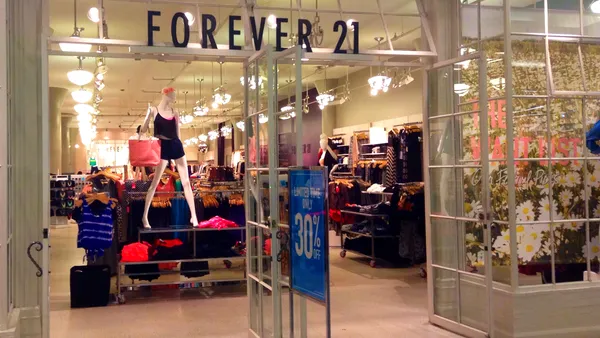Dive Brief:
- Best Buy on Thursday reported fourth-quarter revenue of $14.7 billion, down nearly 10% year over year. Consumers still feel economic and inflationary pressures, which the company said contributed to a decrease in its domestic revenue to $13.5 billion, down nearly 10% year over year. Growth in gaming and tablets offset comp sales declines in home theater, appliances and mobile phones.
- The company’s fourth-quarter domestic gross profit was $2.9 billion for the three months ended Jan. 28. The company reported operating income of $597 million, down nearly 26% year over year. Comparable sales declined 9.3%.
- In its fiscal year 2024 guidance, Best Buy projects revenue of $43.8 billion to $45.2 billion, a comparable sales decline of 3% to 6% and capital expenditures of about $850 million. CEO Corie Barry said on an earnings call that fiscal 2024’s macroeconomic environment will likely result in another down year for the consumer electronics industry, but 2023 is likely to be the bottom of the decline in tech demand.
Dive Insight:
Barry told analysts that the fourth quarter’s promotional environment “was more intense than last year” but that related financial pressures were less than expected, contributing to a stronger gross profit rate performance. Inventory in the fourth quarter was down 14% year over year, but was in line with the company’s sales trajectory versus the pre-pandemic 2020 fiscal year.
CFO Matt Bilunas echoed that sentiment, saying “we continue to feel good about our overall inventory position as well as the health of our inventory during fiscal ‘23.” Bilunas also noted that a 2023 calendar quirk — the fact this year has 53 weeks for sales reporting purposes — will likely add $700 million in revenue to fiscal year ‘24’s fourth quarter revenue.
For fiscal 2024, Barry said the company’s plans include closing 20 to 30 large format stores, implementing eight Experience store remodels, and opening about 10 additional outlet stores. Changes to Best Buy’s brick-and-mortar store formats and routine store updates and maintenance will equate to $200 million in capital expenditures.
The company’s headcount declined by about 25,000 people or 20% over the last three years, which it attributes to a shift in consumer buying behavior and a desire for more flexibility.
Best Buy said it incurred $86 million of restructuring costs in Q4. They were related to employee termination benefits associated with an ongoing restructuring initiative that began in the second quarter of the company's 2023 fiscal year.
Barry provided an update and insight into that process Thursday.
One part of that process includes moving away from a one size fits all store format to a portfolio of formats that serve specific markets. Best Buy plans to expand some of its backroom spaces by reducing selling square footage. Barry said one reason for this change is because 80% of SKUs on display on the sales floor sell one or fewer per week.
“Our stores have multiple purposes now and a larger backroom provides better support for other capabilities like our high rate of in-store pickup of online orders. In addition, we see significant opportunities to leverage these larger store warehouses and our supply chain expertise to help our vendor community fulfill a larger portion of their direct-to-consumer channel,” said Barry.
Consumers who spent heavily on tech during the height of the pandemic are nearing the first wave of replacement cycles for pandemic-era devices and tech. But they still feel financially pressured and are reluctant to make big ticket purchases, Neil Saunders, managing director of GlobalData, said in emailed comments.
Saunders said it appears “that the electronics sector is in something of a mild recession.”
“On devices and gadgets, the market was not helped by a weak release cycle of new product. There are certainly new areas of interest, such as virtual reality headsets, but these are still a long way off being a mass [market] product and are simply not stimulating consumer interest in the same way as mainstream products like new phones or televisions do,” Saunders said.
Saunders said a weak release cycle in the consumer electronics industry didn’t help the market. Neither did holiday season product shortages for hot items like iPhones. “Both things affected Best Buy, and the latter issue pushed more shoppers to buy directly from suppliers like Apple than go into a Best Buy store.”
While Best Buy has slight room for improvement in showcasing new technology like electronic health products and virtual reality devices in stores, overall, Saunders said the company is getting it right when it comes to retail fundamentals like customer service and omnichannel.
Correction: The story has been updated with a more precise description of the company’s Q4 revenue.













